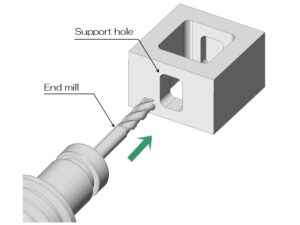019 Milling: What is a 5-axis machining?
1. What is a 5-axis machining?
One of the most advanced cutting machines is the 5-axis machine.
Although it is a form of machining center, it has many advantages over general 3-axis processing machines, so it is often regarded as a 5-axis processing machine.
This time, let's introduce what a 5-axis processing machine is and what it can do.
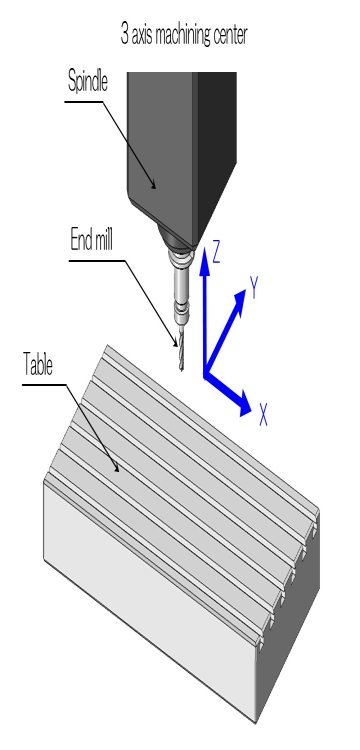

The diagram above explains the difference in internal structure between a general 3-axis machine (left) and a 5-axis machine (right).
As we have introduced previously, 3-axis processing machines have a simple configuration, consisting of a table surface that fixes the material, and a spindle that moves while rotating the end mill.
The 5-axis processing machine is also equipped with a mechanism that allows the table to rotate around the A-axis and C-axis.
The image on the right above depicts a typical cradle type for 5-axis processing machines, but each manufacturer offers 5-axis processing machines with various mechanisms.
2. How does a 5-axis machine work?
How does a 5-axis processing machine operate with this kind of mechanism?

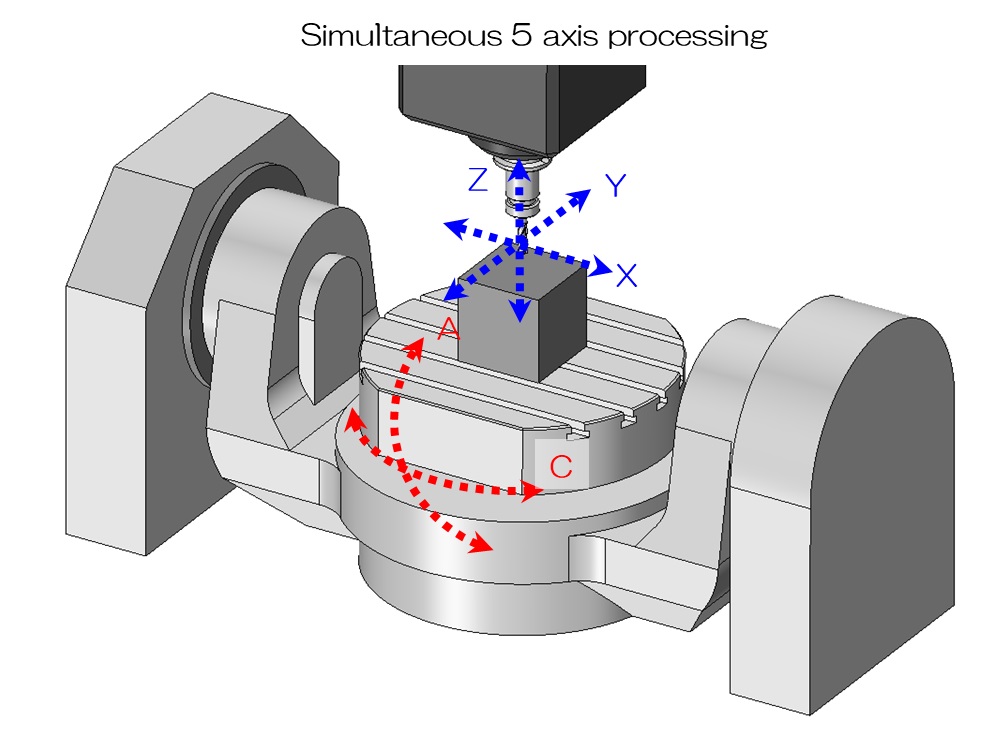
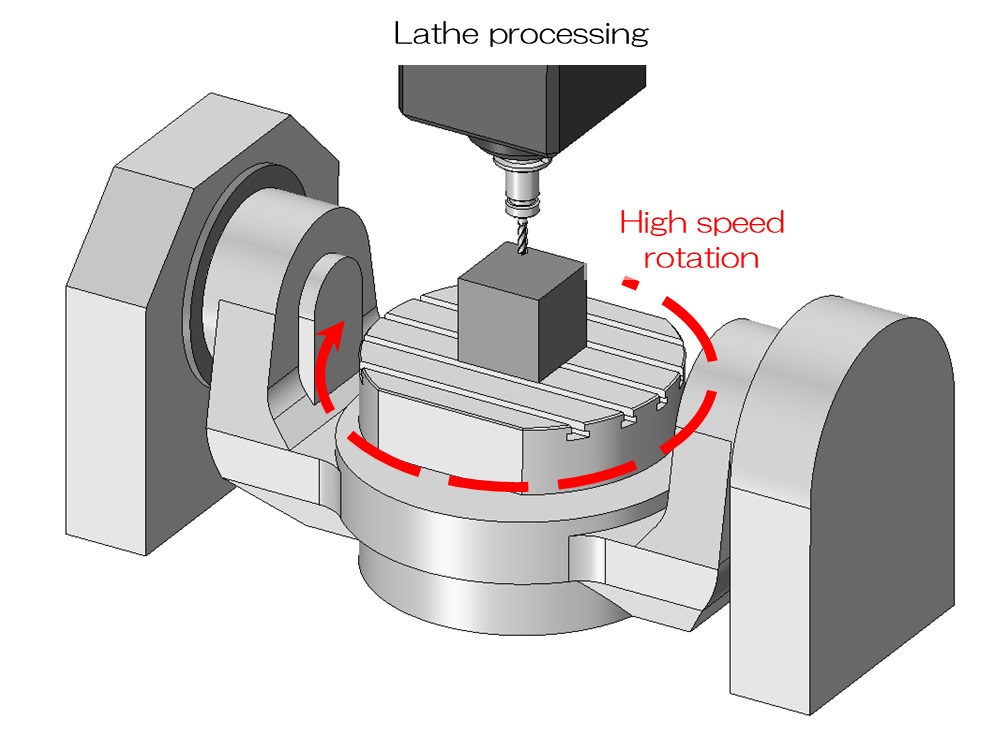
The diagram above represents the typical operation and machining method of a 5-axis machine.
The typical use of a 5-axis machine is fixed 5-axis machining, as shown on the left.
After rotating the material in the desired direction and fixing it, the main shaft is moved to process the material.
Once machining is completed at that angle, simply rotate to the next angle and repeat, allowing you to continue machining multiple surfaces without changing setups.
Polyhedral machining and diagonal machining can be done in a single setup, so the process can be significantly shortened even when machining complex shapes.
Simultaneous 5-axis central machining is a process in which the spindle and table move in conjunction with each other, rather than fixing the table at a certain angle as in fixed 5-axis machining.
There are some shapes, such as impeller and blade machining, that cannot be created without simultaneous 5-axis machining.
I'm sure many of you have seen sample videos of 5-axis machining on Youtube, etc., and the movements are very dynamic.
Naturally, creating that NC program requires extremely advanced CAM and craftsmanship.
Some 5-axis processing machines, as shown on the right side of the figure above, rotate the C-axis at high speed and can be used like a lathe.
For cylindrical parts, turning and cutting can be performed using one machine and one set-up, which in some cases can result in extremely high productivity machining.
3. What can you do with 5-axis machining?
5-axis processing machines are excellent machines that can process complex shapes, but what exactly are they used for?
Let me introduce a few concrete examples.
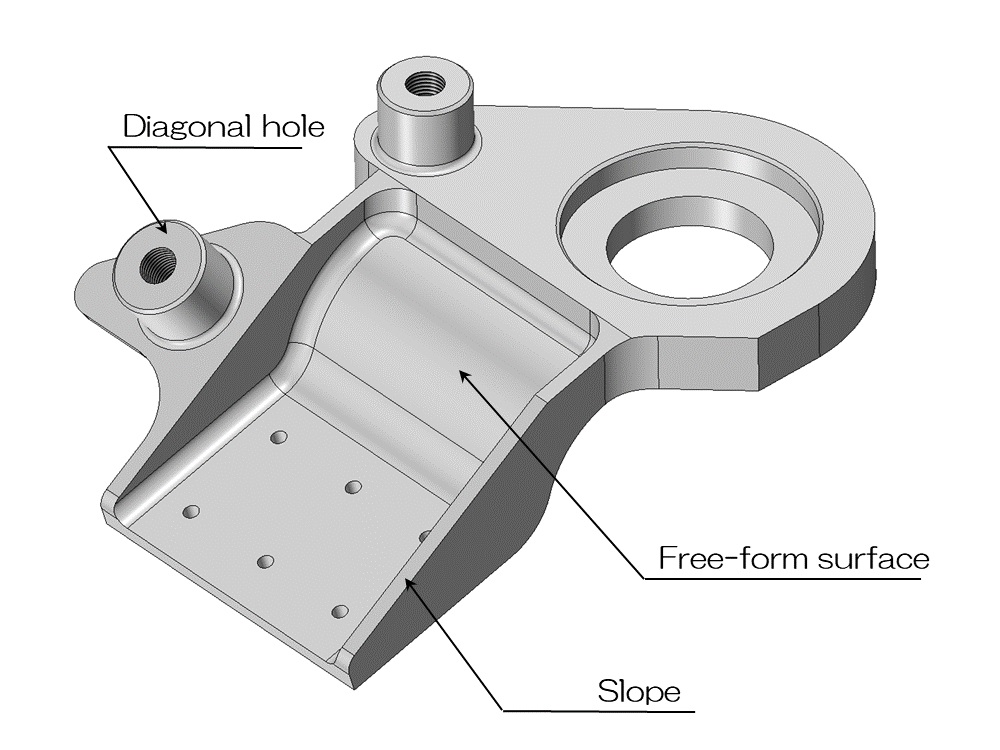
A typical example is an aircraft part like the one shown above.
Aircraft parts are designed to be as light as possible while maintaining maximum strength, so they often have complex shapes.
There are many curved surfaces, slopes, and diagonal holes.
It would be difficult to manufacture such parts using a standard 3-axis processing machine.
You will have to change the setup many times during machining, taking into account the uncut parts due to undercuts.
Also, since the shape is complex, we must devise a method for fixing it.
In some cases, it may be necessary to use cutting to create a jig for fixing.
With 5-axis machining, all 5 surfaces other than the surface that attaches to the table can be machined in one set-up, which greatly shortens the process and also makes it easier to ensure machining accuracy.
5-axis processing machines are extremely effective when machining complex shapes like this.
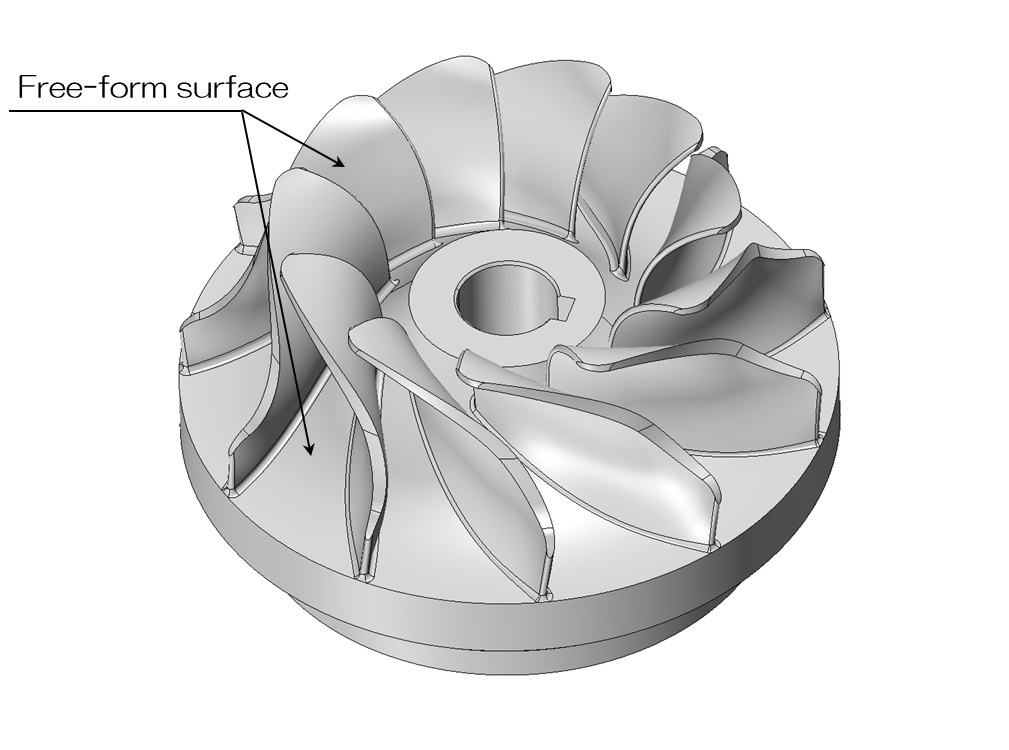
A typical shape that can be achieved with simultaneous 5-axis machining is an impeller like the one shown above.
You may have often seen it on samples of machined products.
An impeller has a complex arrangement of blades that are folded over each other.
Even if you cut from a certain angle, there will always be an undercut somewhere, leaving uncut parts.
Even with fixed 5-axis machining, it is possible to perform machining while changing the angle many times, but creating NC programs is extremely difficult.
Simultaneous 5-axis machining is used in such cases.
It can be said to be one rank higher machining method among 5-axis machining.
All five axes work together to process curved surfaces without leaving anything uncut, and to avoid interference between the tool and workpiece.
The CAM for this is also completely different from the fixed 5-axis.
Situations where simultaneous 5-axis machining is used are quite limited, but it is certainly a very powerful machining method.
By using such a 5-axis processing machine, the range of parts production can be expanded.
We would appreciate it if you could take advantage of these characteristics and actively utilize them in your machine design.
